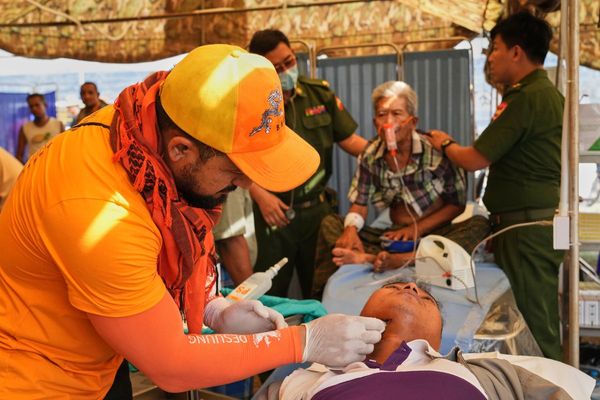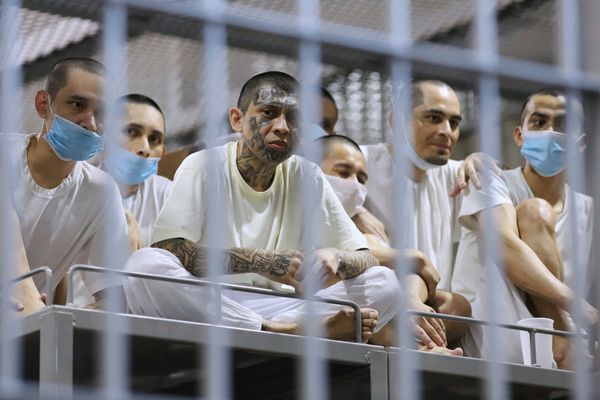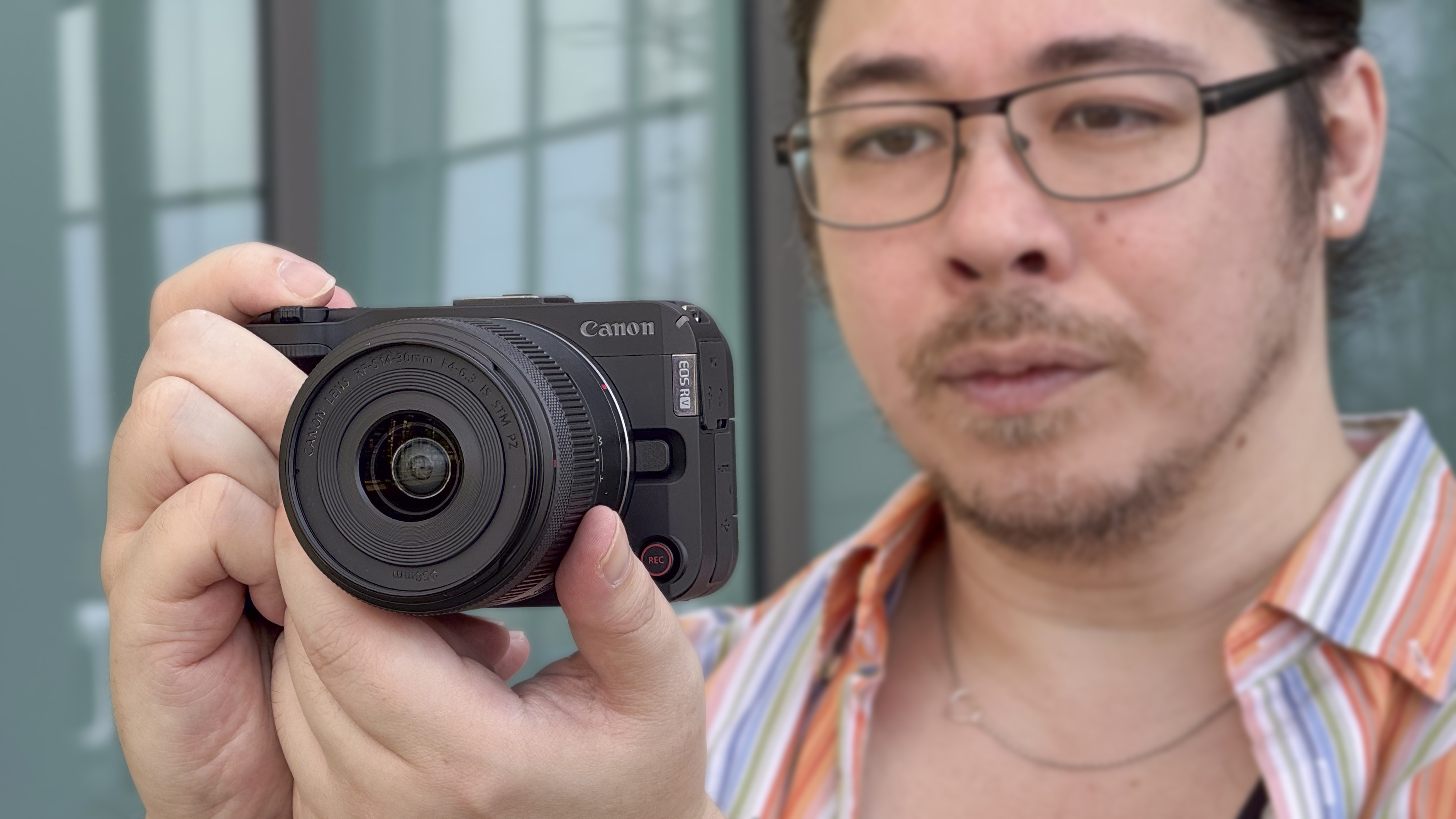
The Canon EOS R50 V is the first ever interchangeable lens model in Canon's new V Series of content creation cameras.
The V stands for "video first", and the Canon EOS R50 V joins the entry-level Canon PowerShot V10 vlogging camera and the flagship Canon PowerShot V1 compact to offer a solution for higher-end creators who require interchangeable lenses and greater creative and technical options.
As you'd expect, the Canon EOS R50 V is a video-centric version of the enormously popular EOS R50 – which has been a go-to for vloggers since the days of the EOS M50. So what exactly does the R50 V offer that's new?
@digitalcameraworld ♬ Chill out jazz pop of a gentle guitar(865334) - RYU ITO
Canon EOS R50 V: Price & availability
The Canon EOS R50 V goes on sale in April, and will carry a body-only price of $649.99 / £729.99 / AU$1,169. It will also be available in a kit with the new Canon RF-S 14-30mm f/4-6.4 IS STM PZ lens for $849.99 / £959.99/ AU$1499.95.
However, the best bang-for-buck bundle is the Canon EOS R50 V Creator Kit, available for £999.99 in the UK. This includes the R50 V, the RF-S 14-30mm power zoom, along with the HG-100TBR grip and BR-E1 Bluetooth remote, plus the DM-E100 microphone and a 32GB memory card.
Canon EOS R50 V: Specifications
Canon EOS R50 V: Build & handling
The first thing that struck me about the Canon EOS R50 V is just how small it is. Without a lens it's barely bigger than the PowerShot V1, which is a pocketable compact camera.
This makes a lot of sense, as the biggest physical difference between this camera and the original R50 is that the R50 V ditches the viewfinder – shedding not just height but also depth, giving the video body a much smaller footprint than its photo cousin.
While the lack of a finder is the most obvious difference, it's far from the most important. For solo self-shooters, the addition of a record button on the front of the camera (below the lens release) is manna from heaven.

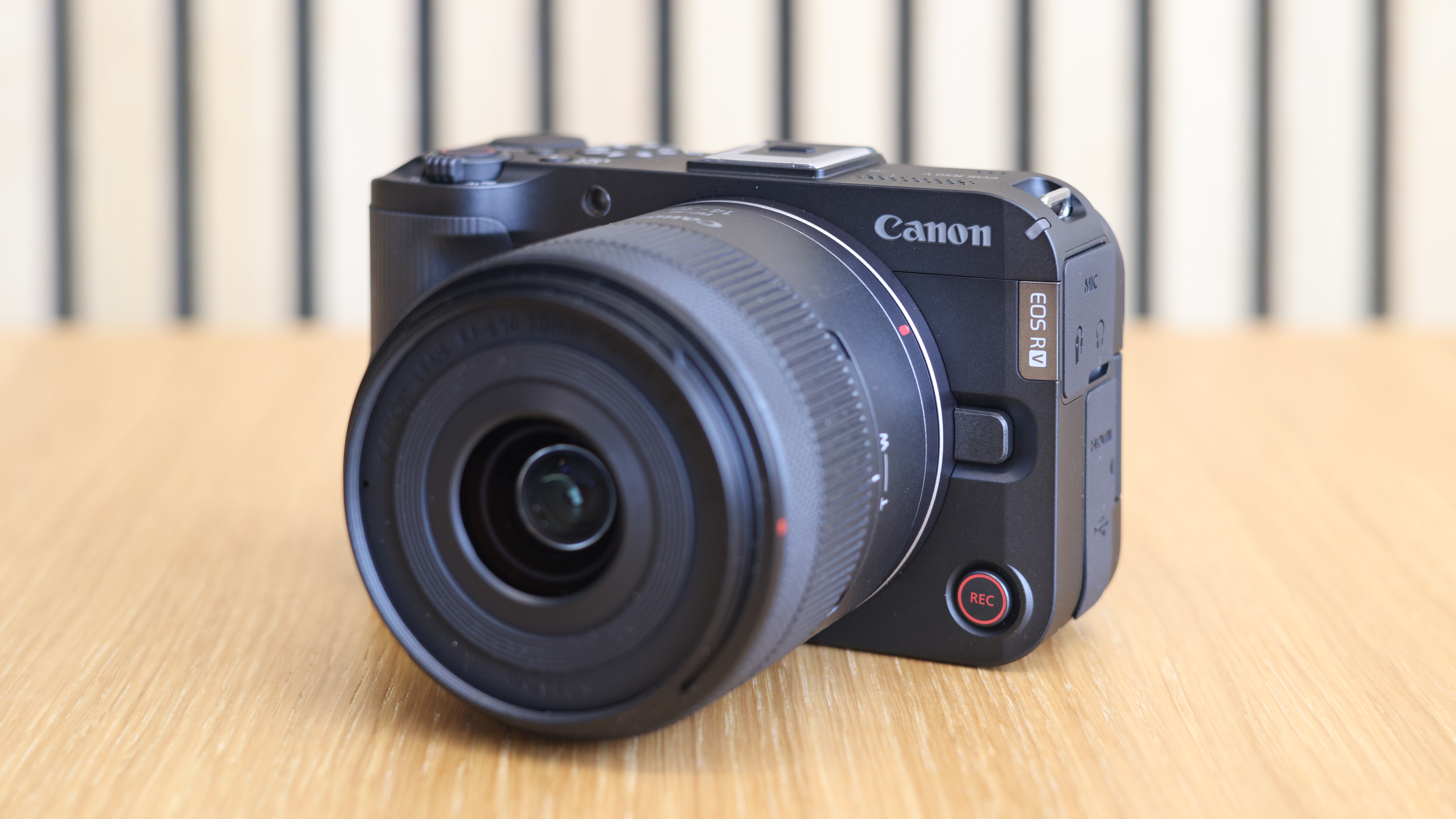
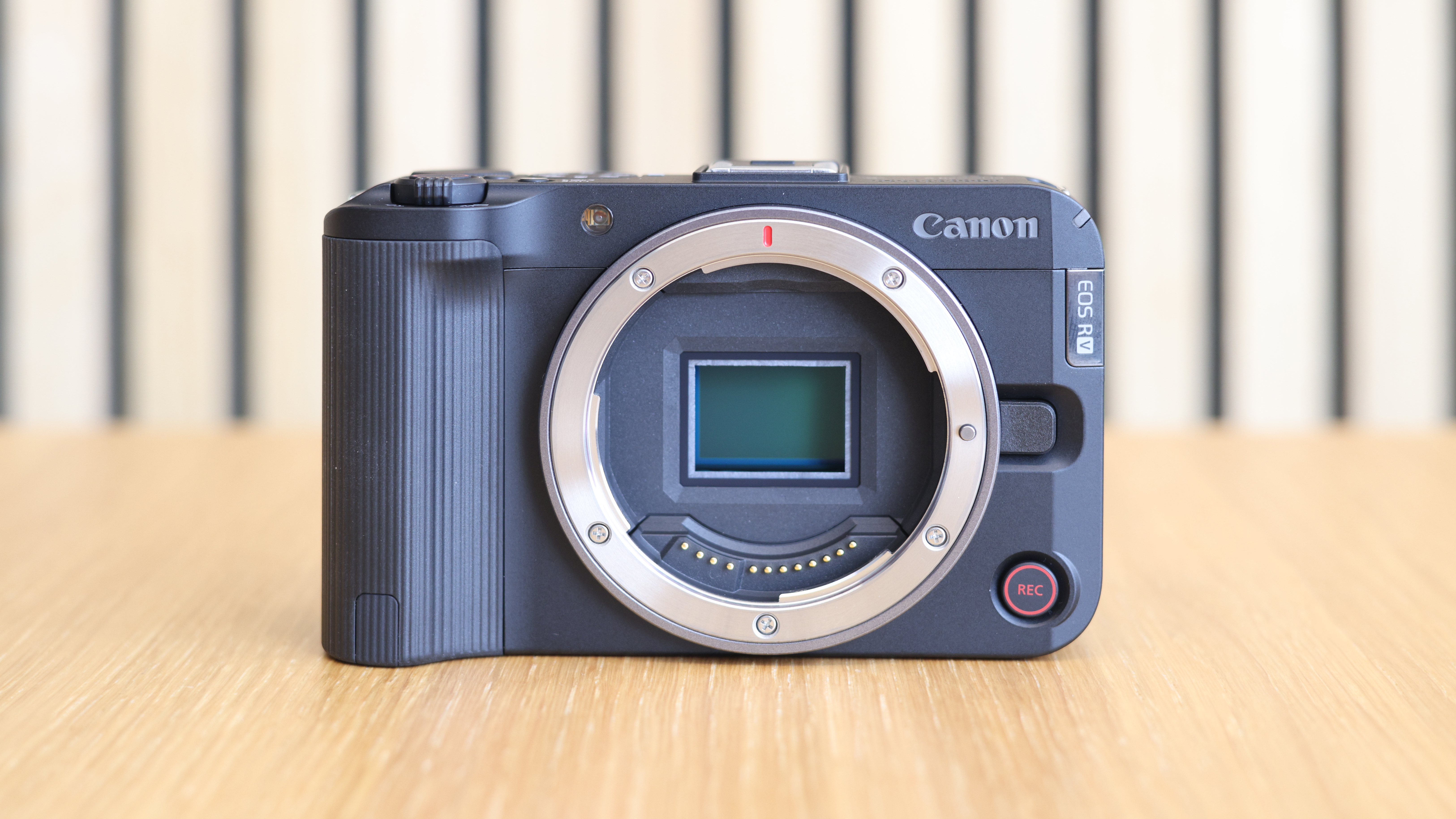


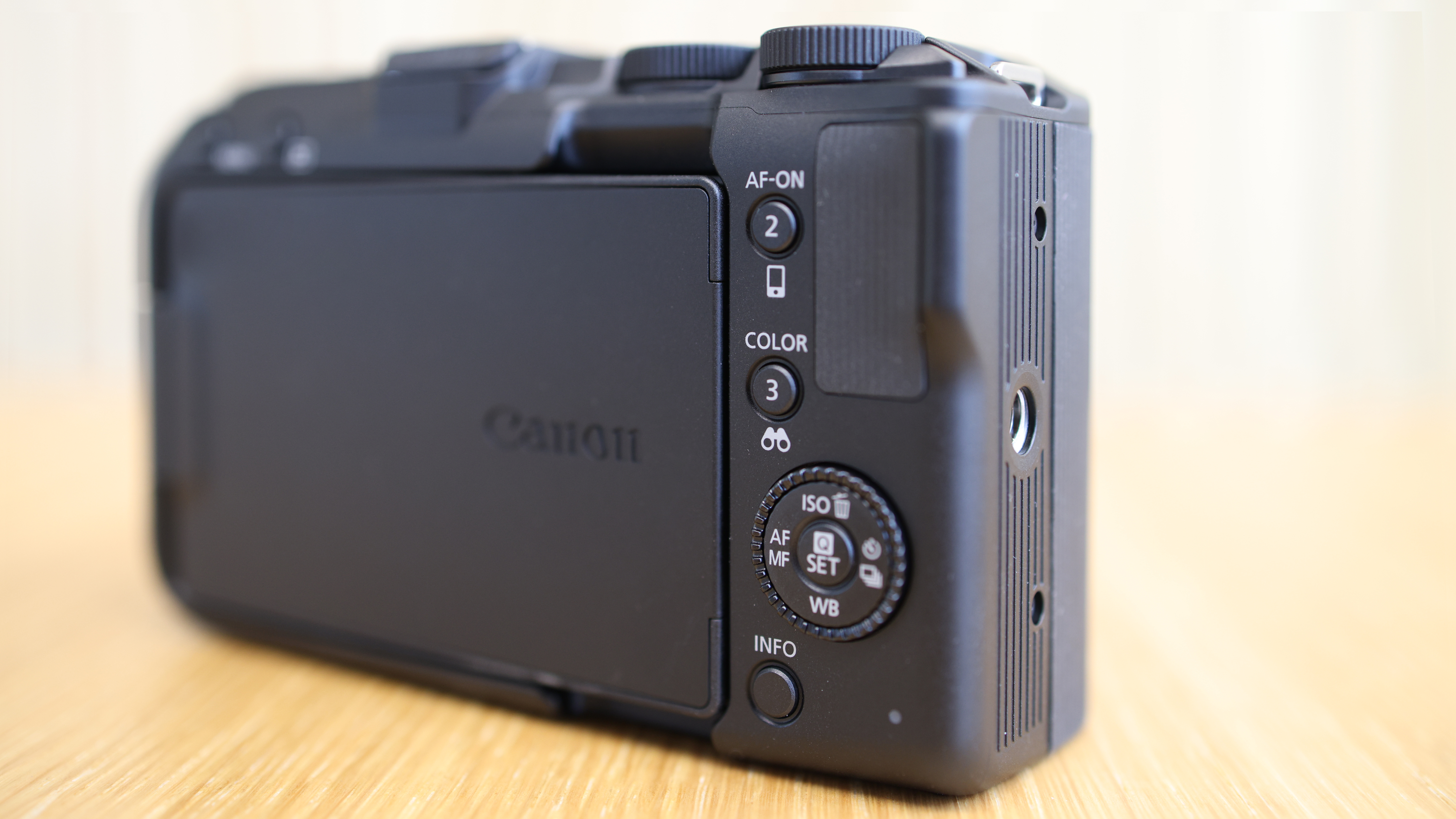
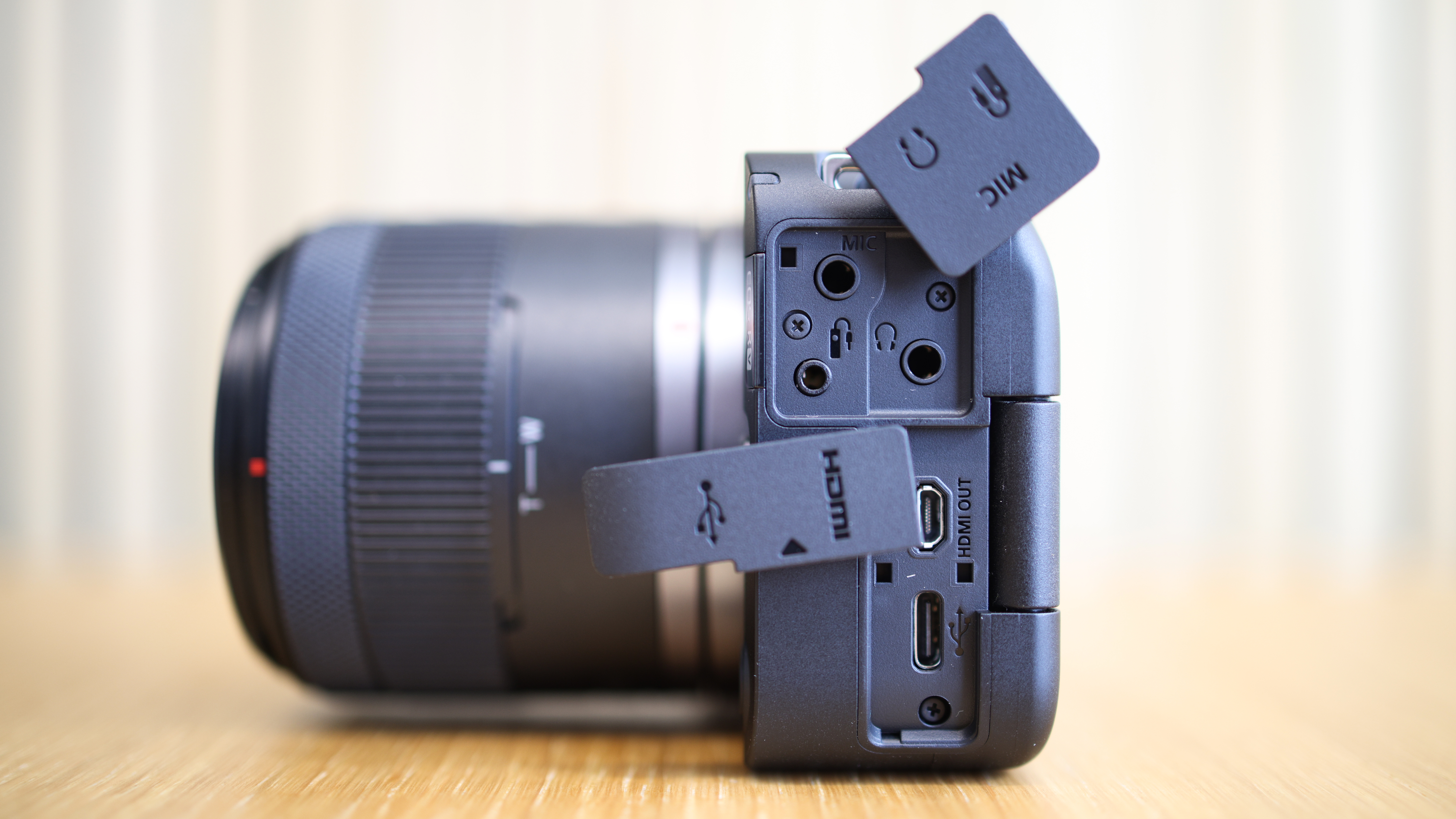
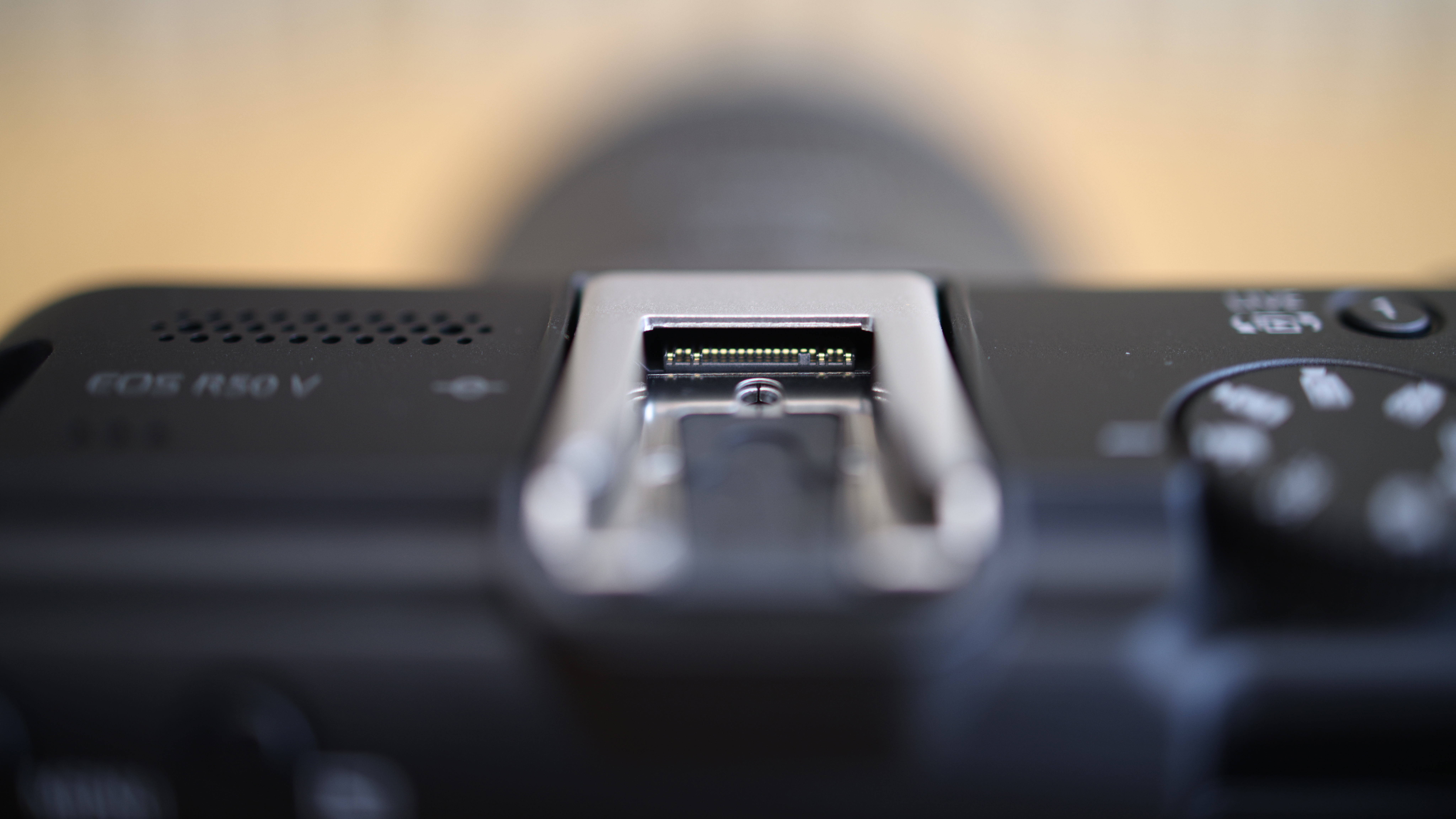
I hate having to guess where the controls are on the top and rear of a camera when I'm trying to film myself (especially when I'm increasingly frustrated after the umpteenth blown take!), so the big red record button (similar to the one on the V10) is an incredibly welcome addition to the Canon EOS R50 V.
Speaking of the top plate, as you'd imagine it has been redesigned to accommodate video-first shooting. The shutter button is now another big red record button, and the traditional PASM dial has been replaced by a video dial giving you quick access to manual, auto, scene, custom (three of them), slow & fast, and stills shooting options.
Next to the record button is a Live button, for quick access to live streaming functions. However, perhaps the most interesting addition is the power zoom rocker switch that's wrapped around the front of the record button.
This is tailor-made for compact power zooms, such as the new Canon RF-S 14-30mm, and the speed can be customized depending on how fast or gently you want to push in or out. It seems like a big commitment to incorporate this zoom switch for just one lens (even if it is the kit lens that most people will buy in a bundle), so I wouldn't be surprised if we see more RF-S power zooms down the line.
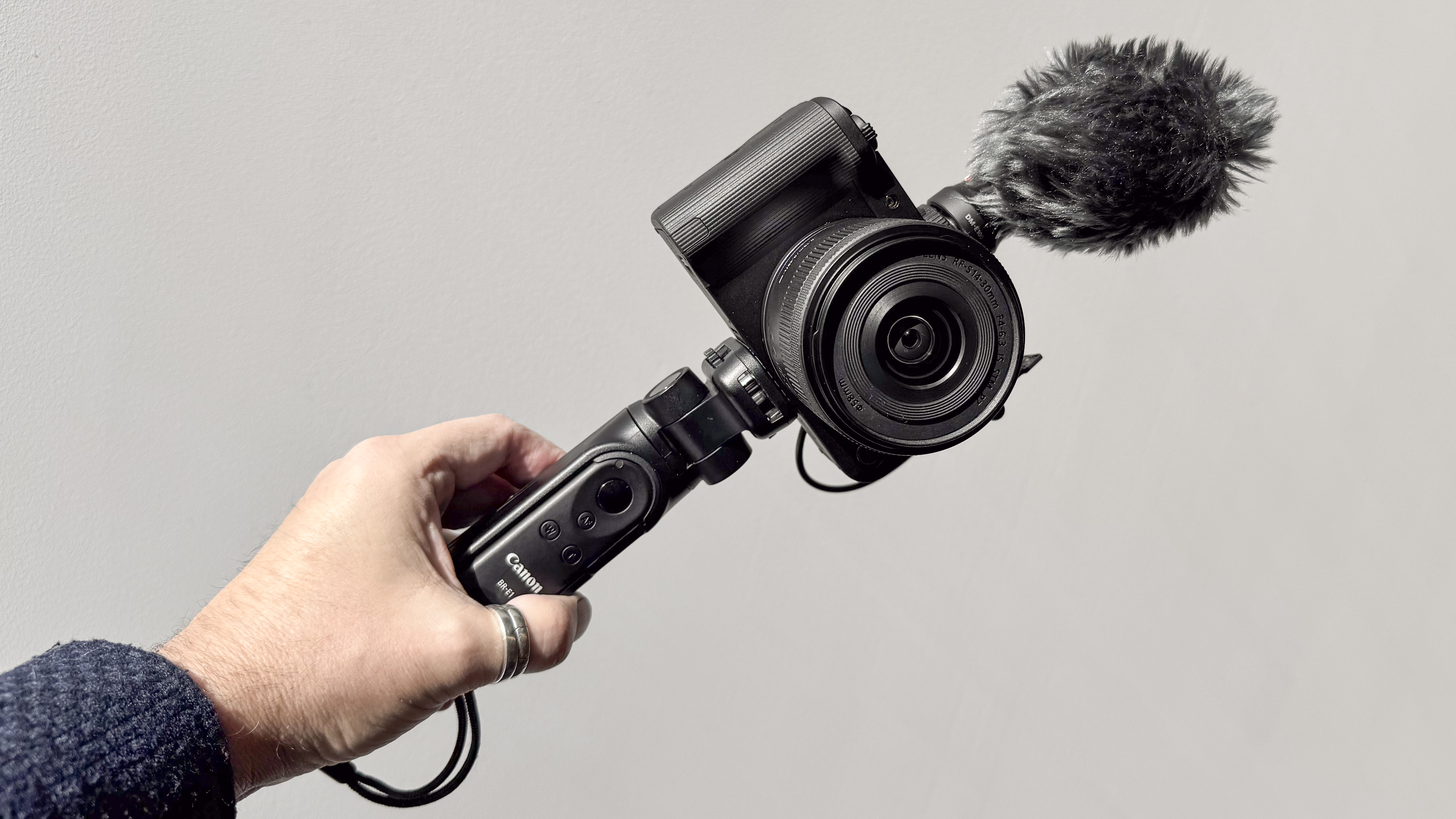
Another new button on the rear of the camera is Color, which summons the Color mode menu for quick access to Picture Styles (Canon's usual selection of Standard, Portrait, Landscape and so on), Color Filters (with options like StoryTeal&Orange, ClearAmber and RetroGreen) and Custom Picture File (to make use of Canon Log 3 and 709, along with Look Files).
Along with headphone and microphone jacks, a USB-C connection (supporting UVC up to 4K 60p) and an HDMI mini port, the Canon EOS R50 V also benefits from the Multi-Fn Shoe to enable high-speed and in-camera communication with supported devices.
I asked Canon if this might be used for an external EVF, similar to the EOS M6 Mark II. While I was told that there are no current, if there is demand from customers then Canon might be open to it.

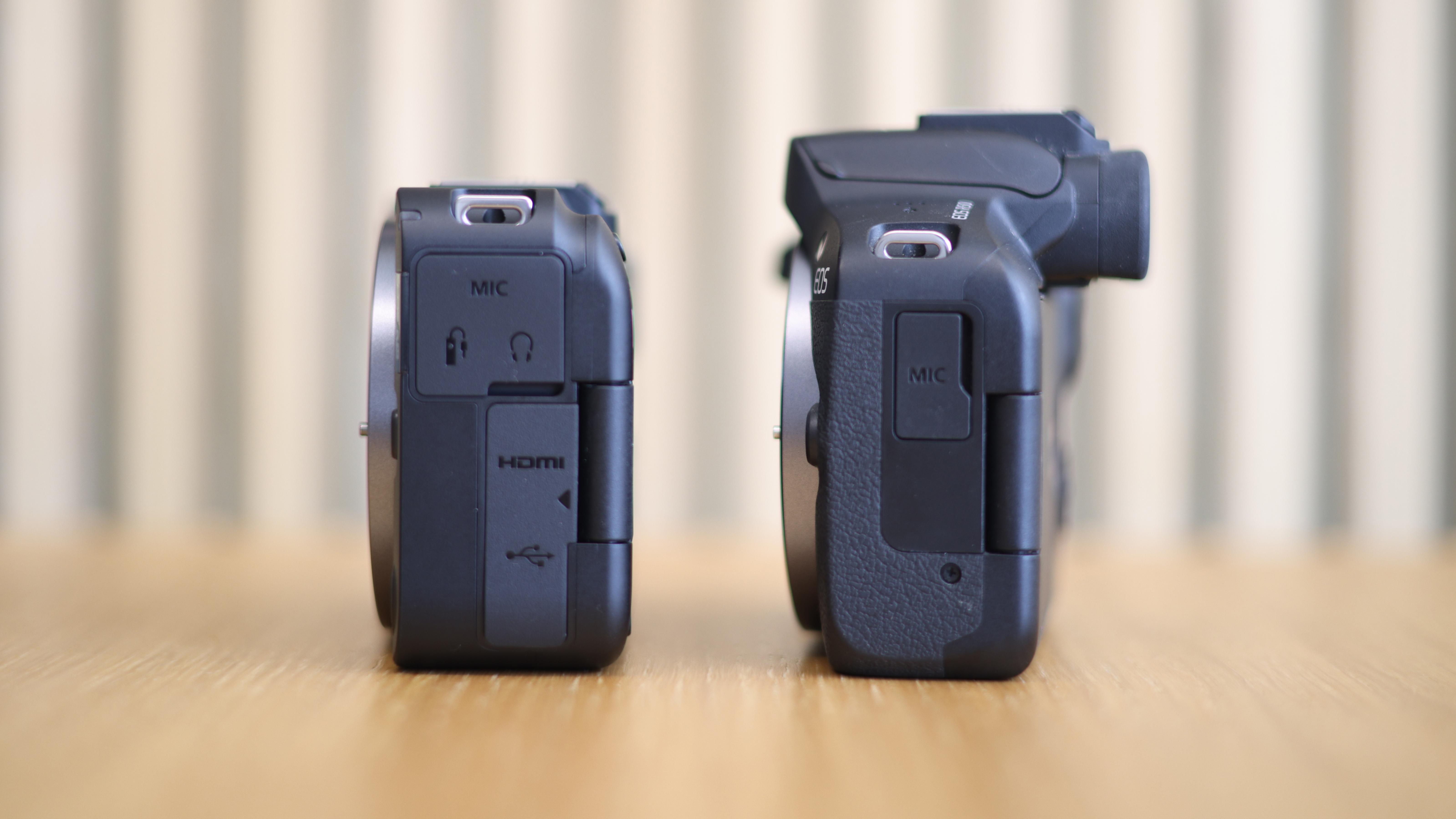
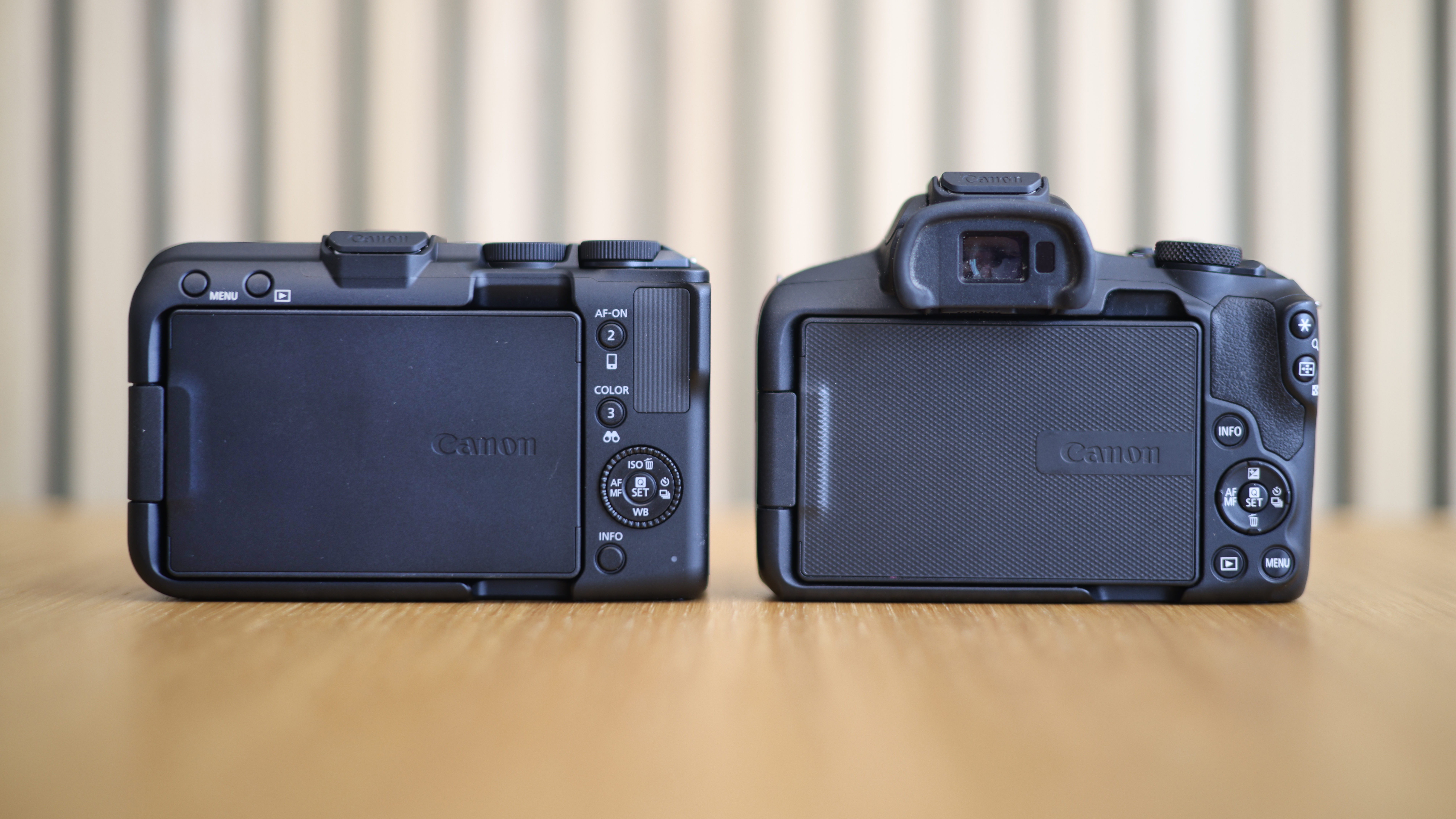

Canon EOS R50 V: Performance
While I'm going to need a lot more time with the Canon EOS R50 V to evaluate it properly, I'm impressed with what the camera has to offer – and what it offers is a distinctly different proposition to the base R50, as well as the other products in the extended V Series.
Crucially, it covers all the basics – things like a tally lamp on the front, and a red tally box on the rear screen, along with displaying the shooting info vertically when you're shooting vertical video.
And I know I keep going on about the big red record button on the front of the camera, but I can't emphasize enough how Canon makes this camera easy to use by putting direct access controls at your fingertips.
This extends to things like the Live button. Setting up live streaming on other cameras involves putting on a miner's helmet and diving into cavernous menu systems, so to have it as a quick-access button is a dream.
Crucially, the Canon EOS R50 V is the first camera that's compatible with Canon's Live Switcher app – which enables streamers to connect and switch between three simultaneous video streams (including your iPhone or iPad). It feels like this could be a major selling point for anyone looking to establish an affordable multi-camera setup.
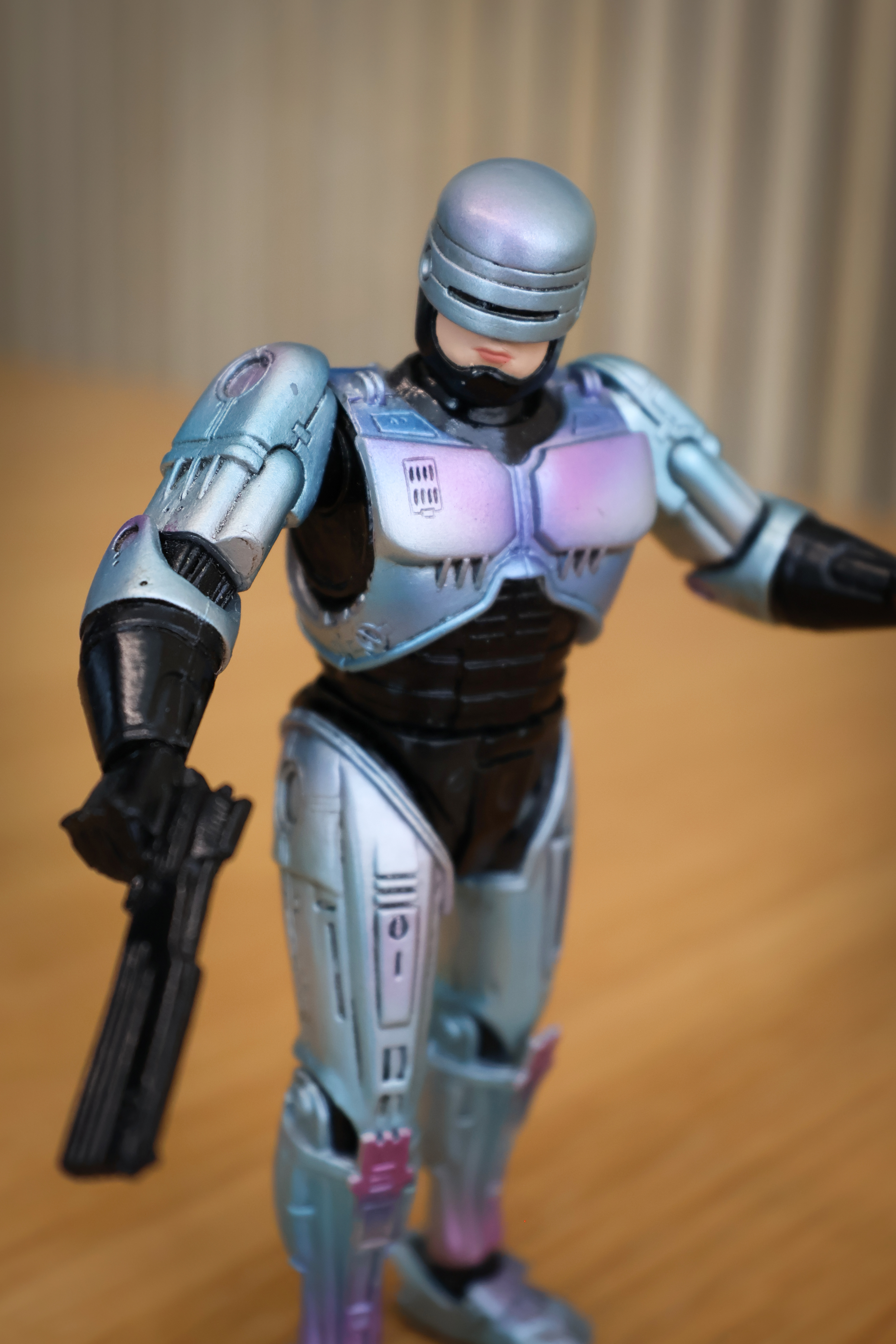
Going back to ease of use, another shoutout goes to the Color button. This makes it easy to punch in everything from bog standard Picture Styles to advanced Cinema EOS features like Looks and log modes – a great Trojan horse to integrate more advanced tools into your shooting.
Indeed, the R50 V feels very much like a junior Cinema EOS device. It's the perfect halfway house between a camera that enables you to simply switch lenses and start a live stream, and one that offers powerful features like timecode and 4:2:2 output.
The 4K 30p looks to be excellent quality, being oversampled from 6K for extra bite in the detail, and slow-motion is offered at 4K 60p and FullHD 120p.
I didn't get to torture it too much, but the Dual Pixel CMOS AF II behaved as impressively as I expected it to. It faithfully found and followed human heads, faces and eyes, along with a couple of passing cars and even some swans and geese.
So far the only potential concern I have is the lack of in-body image stabilization – though a camera this small is almost certainly going to live on a gimbal for most users, and for handheld shooting the RF-S 14-30mm kit lens promises up to 5 stops of shake compensation.
Canon EOS R50 V: Sample video
Canon EOS R50 V: Early verdict
What the original R50 was to stills, the R50 V is to video and content creation: a powerful, portable powerhouse that takes advanced features and puts them front and center for creators looking to graduate from phones and fixed-lens compacts.
Where I think the R50 V really succeeds is in its design; as I've said so many time before, most "video cameras" are just ordinary cameras with a focus on video specs – but they still have all the same buttons and controls as an ordinary photo camera, which are all on the opposite side of the camera if you're a vlogger who self-shoots.
Canon has put the user experience at the fore, with a front-facing record button and dedicated buttons for quick access to features like streaming and picture profiles.
It has also done an impressive job of marrying features from its Cinema EOS line – not just the tally lamp and box on the rear screen, but incorporating features like Look Files, timecode, zebras, false color, C-Log 3 and more.
Not only does this camera empower creators who want to get started in interchangeable lens shooting, it gives them the foundational grammar to graduate to advanced cinema camera functionality.
I'll need more time to test the Canon EOS R50 V properly but, from what I've seen so far, this is the camera that vloggers and content creators have been waiting for.
